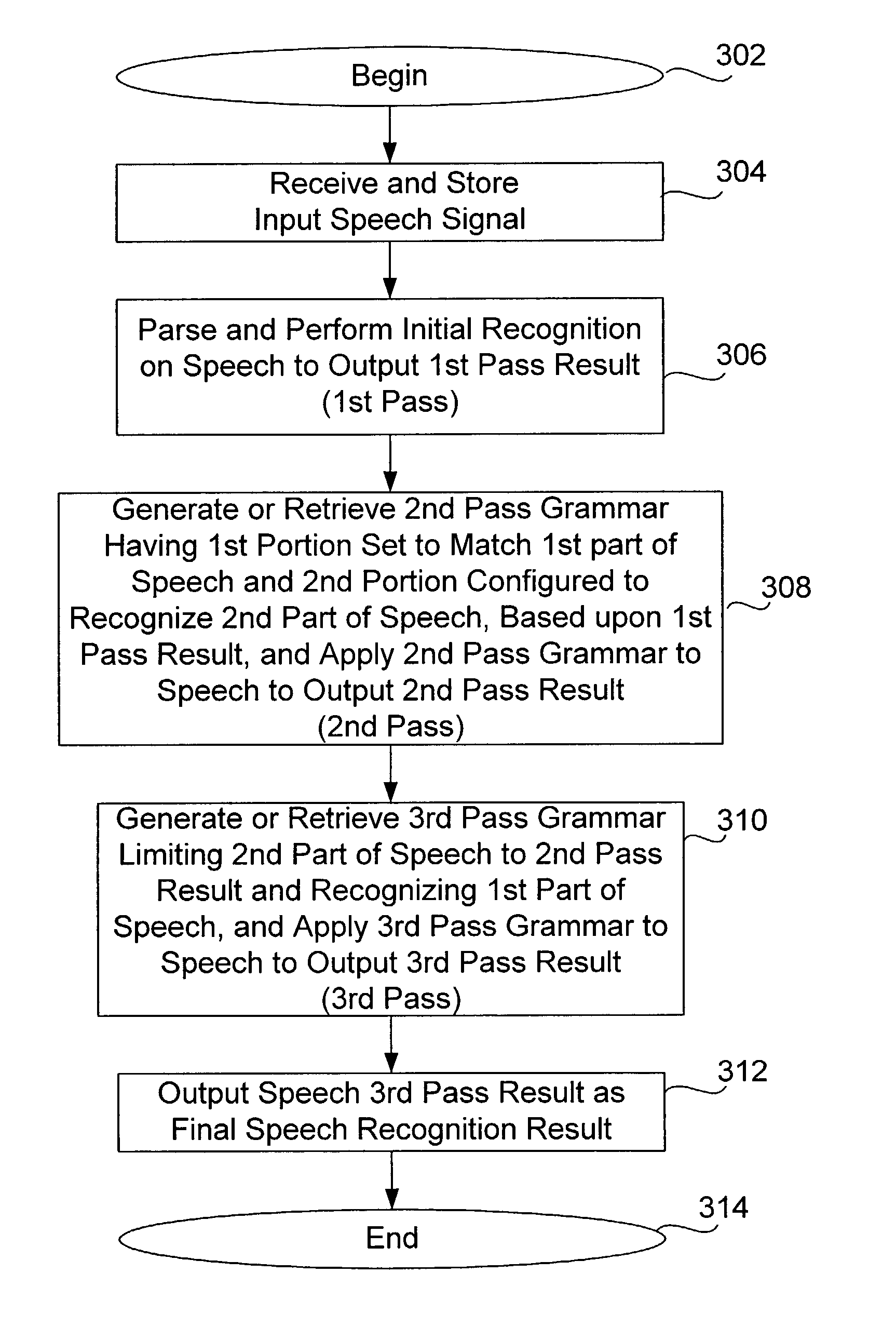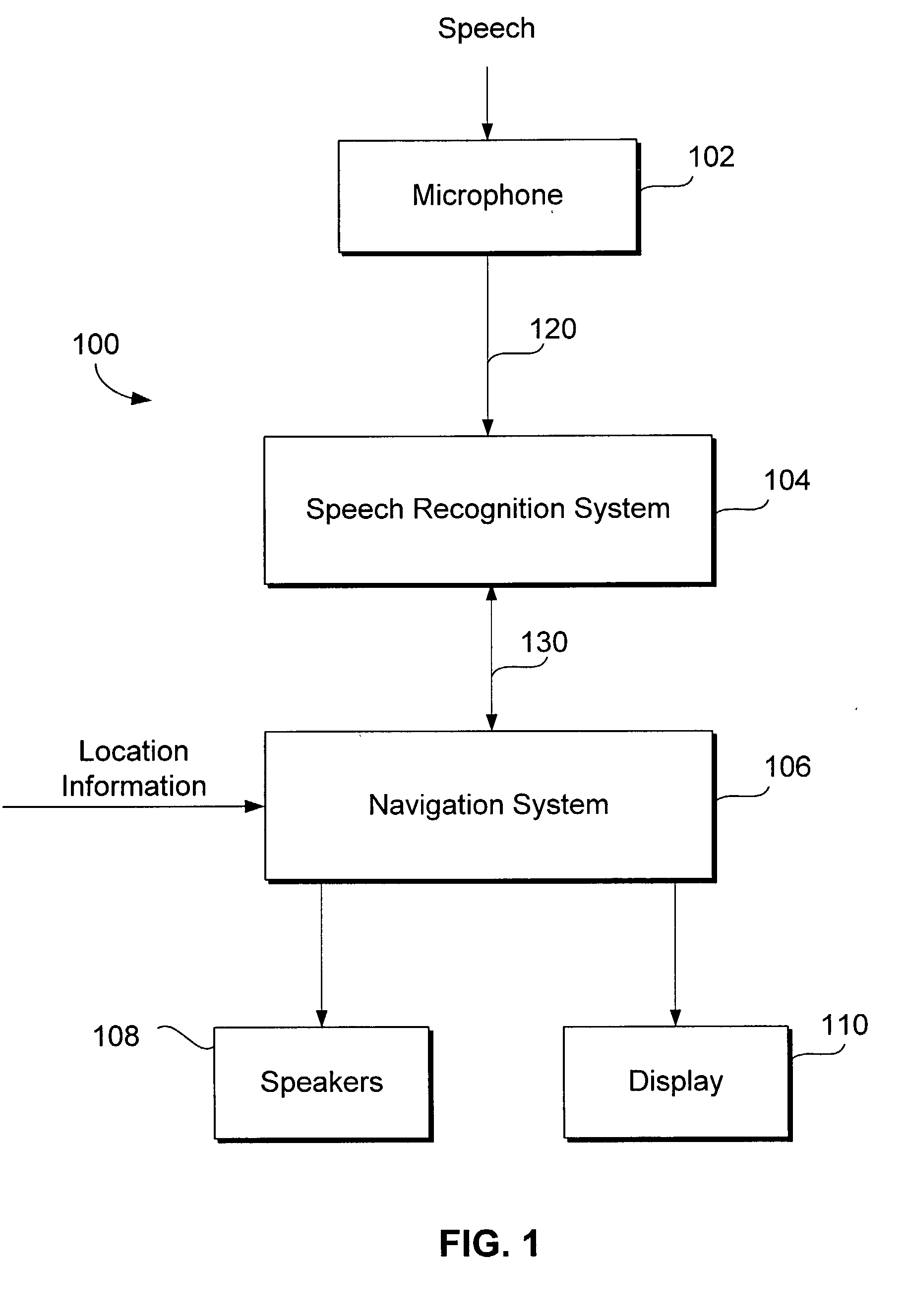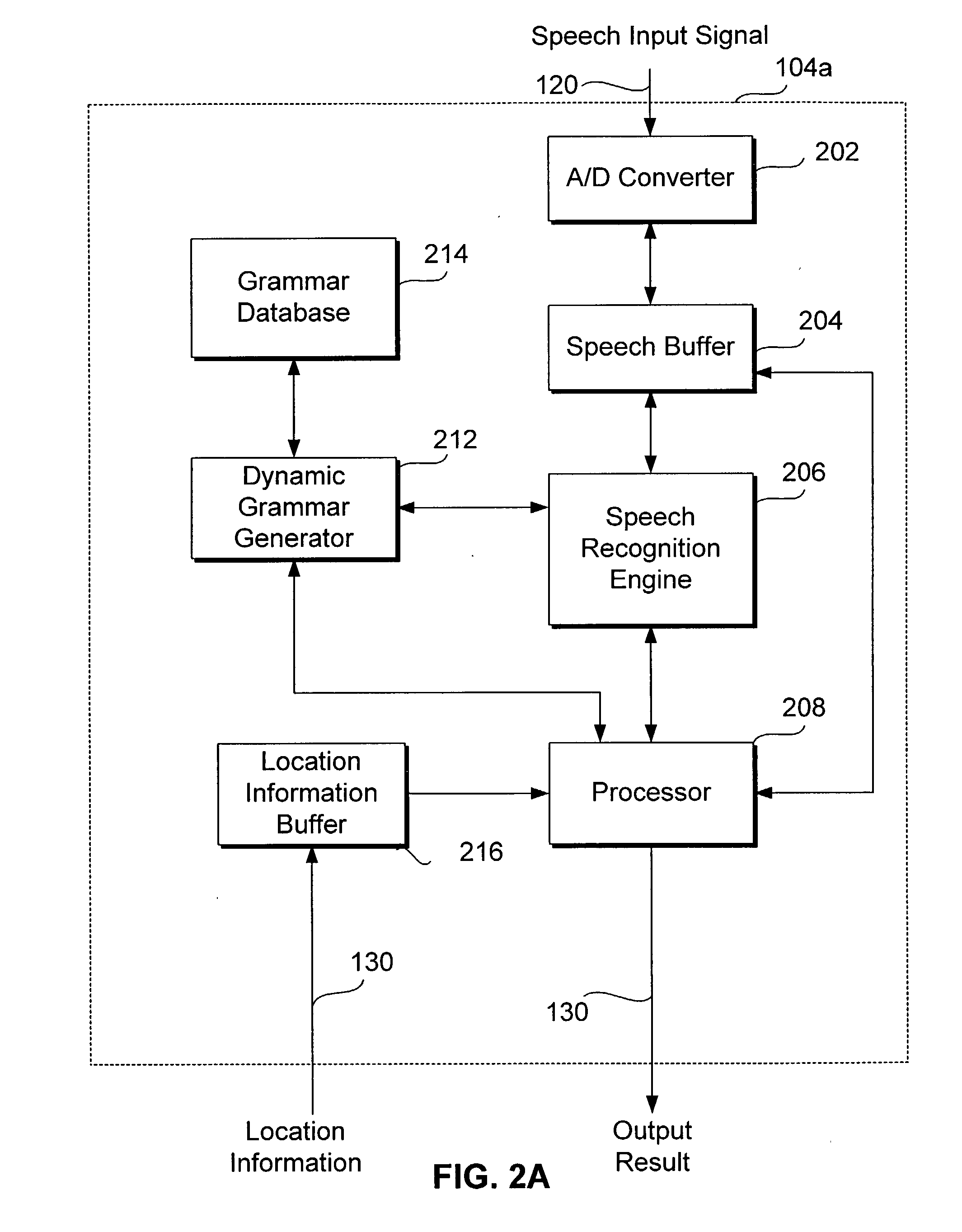Multiple pass speech recognition method and system
a speech recognition and multi-pass technology, applied in speech recognition, speech analysis, instruments, etc., can solve the problems of high error rate, inconvenient use of text input devices, and high error rate of speech recognition systems, and achieve more accurate speech recognition results and accurate methods of speech recognition
- Summary
- Abstract
- Description
- Claims
- Application Information
AI Technical Summary
Benefits of technology
Problems solved by technology
Method used
Image
Examples
second embodiment
[0033] FIG. 2B is a block diagram illustrating the networked speech recognition system 104b comprising a client device 220b and a server 240b. The speech recognition system 104b described in FIG. 2B is different from the speech recognition system 104a in FIG. 2A in that the speech recognition system 104b is distributed computationally between a client device 220b and a server 240b with most of the intelligence of the speech recognition system 104b residing in the server 240b. For example, the client device 220b can be a thin device located in a networked vehicle that merely receives an analog input speech signal from a driver via the microphone 102, and most of the multiple pass speech recognition method of the present invention is performed in the server 240b after receiving the speech information from the client device 220b.
[0034] Referring to FIG. 2B, the client device 220b includes an AID converter 202, a speech buffer 207, a location information buffer 203, and a client communi...
PUM
 Login to View More
Login to View More Abstract
Description
Claims
Application Information
 Login to View More
Login to View More - R&D
- Intellectual Property
- Life Sciences
- Materials
- Tech Scout
- Unparalleled Data Quality
- Higher Quality Content
- 60% Fewer Hallucinations
Browse by: Latest US Patents, China's latest patents, Technical Efficacy Thesaurus, Application Domain, Technology Topic, Popular Technical Reports.
© 2025 PatSnap. All rights reserved.Legal|Privacy policy|Modern Slavery Act Transparency Statement|Sitemap|About US| Contact US: help@patsnap.com



